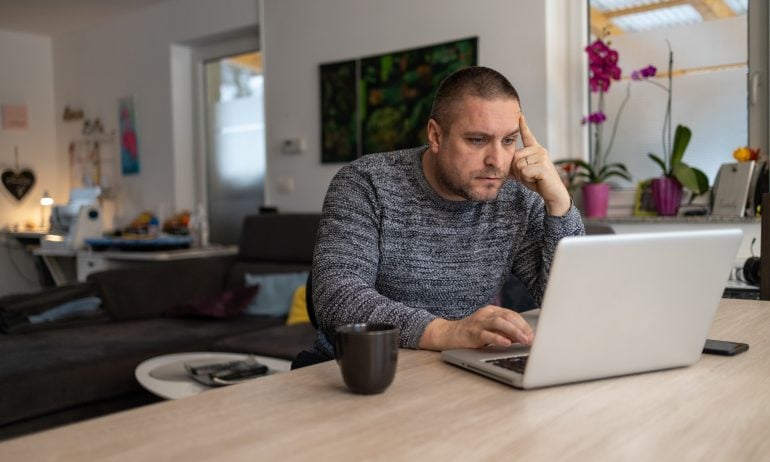Pay Off Debt: Strategies and Tips
Learn strategies for whittling down what you owe, and get insight into the best approach depending on your debt load.

Many, or all, of the products featured on this page are from our advertising partners who compensate us when you take certain actions on our website or click to take an action on their website. However, this does not influence our evaluations. Our opinions are our own. Here is a list of our partners and here's how we make money.
There are several options for paying off debt, and that can feel overwhelming. The best way to pay off debt depends largely on how much you owe and how it compares to your income.
If your debt doesn’t consume a significant portion of your income, you might find success by tackling it on your own with a strategy like prioritizing your smallest balance first, combined with careful budgeting.
But if your debt is overwhelming, finding ways to increase your income, consolidating debts or exploring debt relief could be better options.
Understanding these strategies can help you pay off debt.
How to pay off debt
Assess your debt load
To a large extent, the best way to pay off debt will depend on how much you owe compared to your income.
Start by understanding whether you simply have too much debt. That gives you an idea of whether you can use a DIY strategy for payoff, or if you should consider debt relief options, such as a debt management program.
The calculator below compares the amount you owe on key debt types with your gross annual income (total pay before taxes or deductions). Then it suggests which payoff strategy might work best for your situation.
Look into DIY debt payoff methods
There are a few methods you can try that don’t require seeking additional products or services:
Debt snowball: With this strategy, you focus on paying off your smallest balance first. Put all the extra money you can dedicate to debt payoff toward that account while continuing to pay the minimums on the others.
When that debt is wiped out, add the amount you'd been paying on it to the minimum payment on the next largest debt. The amount you’re paying on the focus debt keeps growing like a snowball getting larger as you roll it.
Debt avalanche: Focus on paying down the debt with the highest interest rate first (while paying minimums on the others), then move on to the account with the next highest rate, and so on.
This might help you get out of debt faster and save you money over the long run by wiping out the costliest debt first. But depending on the balance, it might take a while to zero out that first debt. If quicker wins would motivate you, snowball may be a better method.
Lower your credit utilization: You could also focus on paying down your credit cards with the highest credit utilization — the highest percentage of the credit limit being used. Credit utilization plays a big role in your credit score, so in this case paying down debt could have a side benefit of helping your score.

Get a free, personalized financial plan
powered by Quinn
Consider debt consolidation
Debt consolidation involves using a special loan or credit card to combine multiple high-interest debts, such as credit card balances, into one monthly payment, ideally at a lower interest rate. Some potential benefits of consolidating your debt include:
Lowering your interest rate.
Making your payments more manageable.
Shortening the time it takes to pay off your debt.
A balance transfer credit card or a debt consolidation loan are the main ways to consolidate, but note that you’ll likely need a good credit score to qualify or get a good rate. Each lender sets its own requirements, but generally scores of 690 or higher count as good credit scores.
It’s also possible to borrow from your 401(k) or to use a home equity loan to pay debt, but you do risk your retirement savings and your home in those cases.

Create a budget and stick to it
If you feel like you don’t have enough money to pay down debt, getting clear on your budget may help you prioritize your spending.
Choose a system that works for you: There’s no one-size-fits-all budgeting system, and budgeting can be harder for some people than others.
For example, being neurodiverse can come with unique financial challenges. But the good news is that there are several ways to budget, and you can find the way that works for you, like the zero-based approach, the envelope system or the 50/30/20 budget.
Use technology to make things easier: Technology can make budgeting easier by letting you keep track of all of your financial accounts, categorize your expenses and automate your payments. There are several budget apps to help you stay on top of your money.
Find ways to lower your bills
Finding ways to reduce your monthly bills can help free up more money to put toward debt payoff. And every little bit counts. Don’t be afraid to contact your service providers and see if you can negotiate a better rate on expenses like your cell phone bill.
You may also be able to negotiate your bills for expenses such as your car insurance, credit cards, gym memberships and cable service. Switching providers might get you a better deal. Do your research to compare the rates of different companies.
Get a second job
If you have the ability, making more money even in the short term can boost your debt repayment plan.
Consider getting a part-time job, selling gently used or unused items or using your skills to do freelance work. A side hustle like house sitting, driving for Uber or Lyft or even dog walking can fuel your progress.
Don’t rule out the possibility of increasing your current salary. Research and preparation may help you negotiate more money at your current job.
» Discover ways to make money
Explore debt relief options
If you’ve tried budgeting, negotiating your payments and bringing in more cash — all to no avail — you might want to try debt relief. Debt relief can help you change the amount or the terms of your debt to lighten your financial burden, but it’s not for everyone.
You should consider debt relief if paying off your unsecured debt like credit card bills, personal loans and medical debt within five years isn’t feasible or if your total amount of unsecured debt equals 50% or more of your gross income. There are a few forms of debt relief:
Debt management typically involves working with an accredited counseling agency to pay off your debt at reduced interest rates or with waived fees.
Bankruptcy — Chapter 7 and Chapter 13 are the two most common forms — involves either erasing most unsecured debt or being placed on a court-approved repayment plan for three to five years.
Debt settlement might suit people who don’t qualify for bankruptcy or who simply don’t want to file for it. The process involves negotiating with creditors to reduce the amount you owe. You can try settling debt on your own by contacting creditors or you can hire a company to do it for you.
» Learn more about debt relief
ON THIS PAGE
ON THIS PAGE








